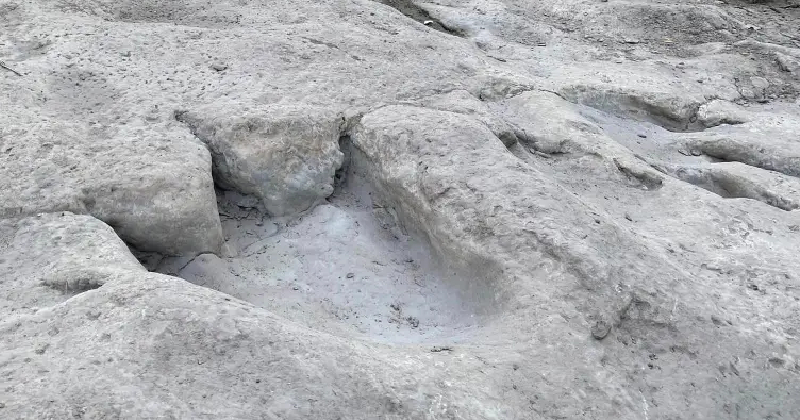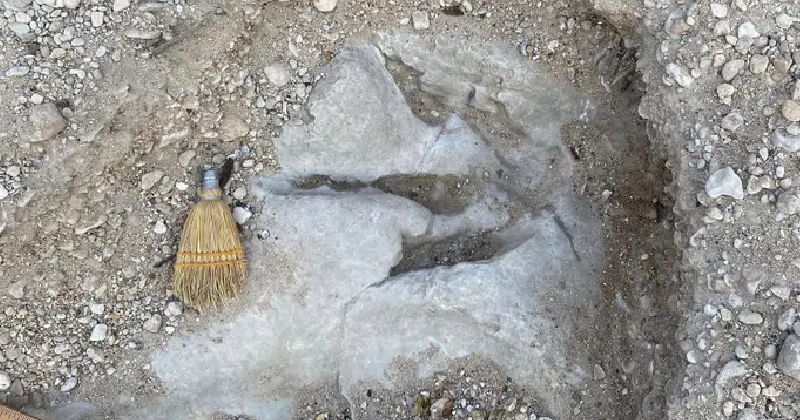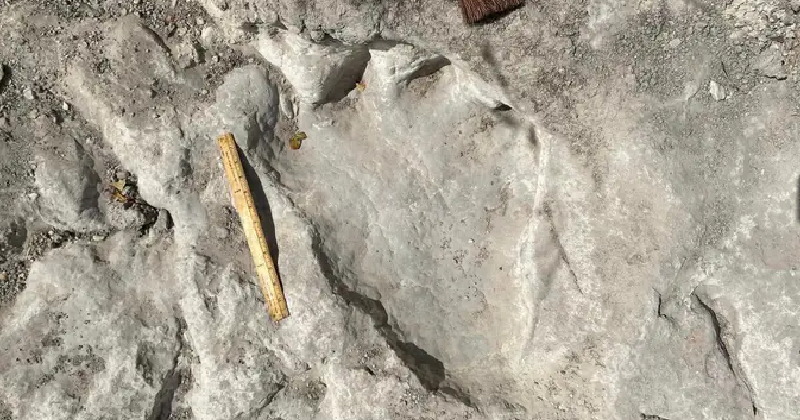A set of tracks believed to have been made by dinosaurs that existed 113 million years ago has been discovered in a parched riverbed in Texas. The scorching heat has led to the exposure of previously hidden sections of the Paluxy River at Dinosaur Valley State Park in Glen Rose, Texas, unveiling these remarkable imprints.
There are two distinct types of tracks: one set, characterized by three-toed prints, is thought to be attributed to the Acrocanthosaurus, a bipedal creature that could reach lengths of up to 39 feet and weigh as much as 7.3 tons.

The second set, featuring broader, elephant-like footprints, is believed to originate from a Sauroposeidon, a colossal, four-legged, long-necked creature that could weigh as much as 60 tons and span a remarkable 111 feet from its nose to its tail.
"The Glen Rose region is a prime location for dinosaur tracks owing to its historical status as an ancient coastal area around 113 million years ago," explained Paul Baker, who serves as the retail manager for the Friends of Dinosaur Valley State Park organization.
Baker further elucidated that the Paluxy River gradually eroded the landscape, eventually exposing these tracks, many of which were submerged until recently.

According to Chron, approximately 70 newly discovered tracks within the park have been revealed during this period of drought, and a dedicated team is currently engaged in mapping them out.
Baker shared a video on Facebook depicting the unearthing of one such track, nearly flawlessly preserved beneath the fissures of dried mud. Glen Rose, as per the US Drought Monitor, is presently situated in an area experiencing an extreme drought. "This is quite unusual for us. Under normal circumstances, all of this would be submerged," remarked park superintendent Jeff Davis in an interview with The Dallas Morning News.
Anticipating that future rains will once again conceal these tracks, Davis explained that there has been a flurry of activity to document them. Baker, who captured the images, expressed, "It has been an arduous undertaking. At times, I've measured the limestone in the riverbed to be as hot as 128 degrees, so it hasn't been easy."

Baker is part of the team currently in the midst of a comprehensive process involving the cleaning, mapping, and casting of some of these discoveries. He mentioned that one of the locations, known as the Ballroom site, "is now nearly fully cleared and presents a remarkable sight. It's almost twice the size it was last year," he added.
For the second consecutive year, the Paluxy River has withdrawn, unveiling a treasure trove of footprints. In August of the previous year, during the initial drought, approximately 60 prints attributed to Acrocanthosaurus were exposed.